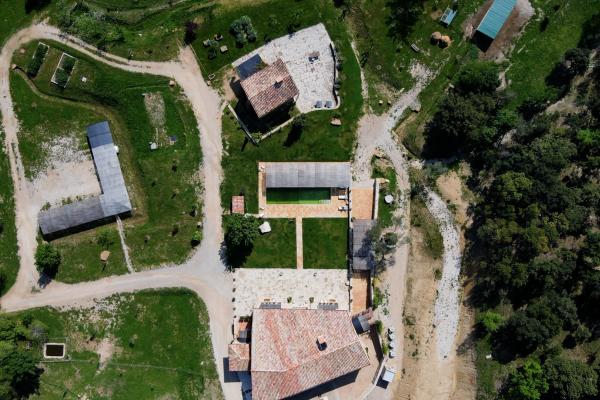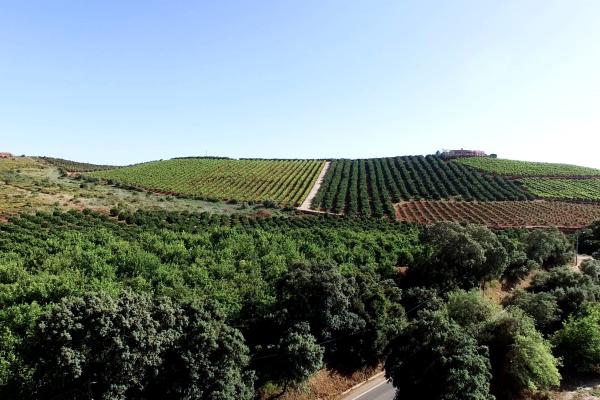Overview
Urban wastewater is one of the main sources of water pollution if it is not collected and treated according to EU rules. It contains organic matter, nitrogen, and phosphorous. These are all removed when properly treated; otherwise, they can lead to eutrophication. It can also be contaminated with harmful chemicals, bacteria, and viruses, which, when untreated and discharged into the environment, affect our health and damage our rivers, lakes, and coastal water.
The EU’s Urban Wastewater Treatment Directive currently in force is more than 30 years old. Since its adoption in 1991, the quality of European rivers, lakes and seas has dramatically improved. EU countries have set up collecting systems and wastewater treatment plants with the help of EU funding. Yet there is still pollution that needs to be addressed and is not covered by the current rules. To address this, the Commission has proposed an update to the Directive.
Objectives
The Directive aims to protect human health and the environment from the effects of untreated urban wastewater. It therefore requires EU countries to ensure that towns, cities and settlements properly collect and treat wastewater. It aims to
- protect the environment from the adverse effects of urban wastewater discharges and discharges from certain industrial sectors
- ensure that domestic and industrial wastewater is effectively collected, treated and discharged
In the EU
Law
The Urban Waste Water Treatment Directive (UWWTD) (Council Directive 91/271/EEC) requires
- the collection and treatment of wastewater in all urban areas of more than 2000 people
- secondary treatment of all discharges from urban areas of more than 2000 people, and more advanced treatment for urban areas of more than 10000 people in catchments with sensitive waters
- pre-authorisation of all urban wastewater discharges, discharges from the food-processing industry and industrial discharges into urban wastewater collection systems
- monitoring of the performance of treatment plants and receiving waters
- controls of sewage sludge disposal and reuse, and treated wastewater reuse whenever it is appropriate.
Other laws
- Directive 98/15/EC – amending the UWWTD and clarifying the requirements regarding discharges from urban wastewater treatment plants to sensitive areas subject to eutrophication.
- Commission Implementing Decision 2014/431/EU of 26 June 2014 concerning formats for reporting on the national programmes for the implementation of Council Directive 91/271/EEC
- Commission Implementing Decision 2014/431/EEC excel templates (EIONET)
Revision
On 26 October 2022, the Commission revised the Directive in line with the results of an evaluation and on the basis of an extensive impact assessment, adapting it to the newest standards. The revision aims to
- reduce pollution, energy use and greenhouse gas emissions
- improve water quality by addressing remaining urban wastewater pollution
- improve access to sanitation especially for the most vulnerable and marginalised
- make industry pay to treat micropollutants
- require EU countries to monitor pathogens in wastewater
- lead to a more circular sector
By 2040 the new rules will
- save almost EUR 3 billion per year across the EU
- reduce greenhouse gas emissions by over 60% compared to 1990
- decrease water pollution by more than 365 thousand tonnes
- cut microplastics emissions by 9%
Many stakeholders were consulted on the revision, as well as the general public through an online public consultation.
Find out more about the revision in the press release and Questions and Answers.
On 29th January 2024, Council and Parliament reached a provisional agreement on the new Urban Wastewater Treatment Directive.. The co-legislators will now vote on the text. Once the new text has been adopted, it will be published in the Official Journal of the European Union and consequently enters into force.
Evaluation
The 2019 evaluation of the Directive found that it is overall very effective when fully implemented. The reduction of organic matter and other pollution in treated wastewater has improved water quality throughout the EU. Implementing the Directive has been expensive, but the benefits clearly outweigh the costs.
However, it found that there is still pollution that needs to be addressed and is not covered by the current rules. This includes pollution from smaller cities, storm water overflows as well as micropollutants, such as residues from pharmaceuticals and cosmetics that end up in the environment and need to be treated. The sector is also one of the biggest consumers of energy in the public domain, so there is huge potential to reduce greenhouse gas emissions and help Europe to become energy- and climate-neutral.
- Staff Working Document on the Evaluation of the Urban Waste Water Treatment Directive
- Executive summary of the Evaluation
- Stakeholder synopsis report
- The effects of the Urban Waste Water Treatment Directive – A Science for Policy Report by the Joint Research Centre
Implementation
All 27 Member States are required to report to the Commission on the measures taken to implement the Urban Waste Water Treatment Directive.
Reporting requirements
To monitor implementation progress, the Commission requires countries to adhere to certain reporting requirements.
- Member States must ensure that situation reports on the disposal of urban wastewater and sludge are published by the relevant authorities or bodies every two years. The Directive requires that the Commission also receive a copy of the report. (Article 16 of the Directive)
- Member States must provide the Commission with information on the status and programme of implementation for the Directive. Commission Decision 93/481/EEC provides the information that this report should contain and the format in which it should be supplied. The first report should be updated every two years. (Article 17 of the Directive)
- Member States must collect monitoring data and to make it available to the Commission within 6 months of receipt of a request. To date the Commission has issued such requests every two years. (Article 15 of the Directive)
Implementation reports
Implementation reports summarise the measures implemented by the Member States and assess the information received.
View the implementation reports
Country profiles
Find key data on how the Directive is implemented in the EU as a whole, as well as in each Member State, Norway and Iceland.
Wastewater monitoring
Since the start of the COVID-19 pandemic, wastewater surveillance has been used as a relatively cheap and reliable tool to help track the presence of the virus. Since there is a correlation between the quantities of the SARS-CoV-2 virus found in wastewaters and the number of persons infected in a particular area, wastewater surveillance can serve as an early warning or management tool.
In March 2021, the Commission adopted a Recommendation on monitoring COVID-19 and its variants in wastewaters in the EU. This Recommendation is part of a set of COVID-19 measures adopted by the Commission as announced in the European preparedness plan entitled the ‘HERA Incubator’. The aim is to provide new independent information on the presence of SARS-CoV-2 and its variant in wastewater. This will be an important source of additional and complementary information for public health decision-making.
The revised Directive will be a game changer in terms of monitoring pandemics. It introduces the requirement for EU countries to set up monitoring of health parameters in urban wastewater for: SARS-CoV-2 virus and its variants, but also polio and influenza viruses, emerging pathogens, contaminants of emerging concern, and any other public health parameters that are considered relevant by the national competent authorities for monitoring.
More information on Tracking COVID-19 employing waste waters
Studies and publications
- Terms and Definitions of the Urban Waste Water Treatment Directive 91/271/EEC – Guidance for implementation and for reporting under the Directive
- The effects of the Urban Waste Water Treatment Directive – A Science for Policy Report by the Joint Research Centre
- Study supporting the Evaluation of the Urban Waste Water Treatment Directive
- Cooperation agreement with the OECD on Estimating investment needs and financing capacities for water-related investment in EU Member States.
- Trionomics et al. (2022). Study to support the Impact Assessment of the UWWTD
- Joint Research Centre (2022) Treatment of micropollutants in wastewater: Balancing effectiveness, costs and implications
- Joint Research Centre (2022) European scale assessment of the potential of ozonation and activated carbon treatment to reduce micropollutant emissions with wastewater.
- Bio Innovation Service et al. (2022) Feasibility of an EPR system for micro-pollutants
Related links
Related laws: Water Framework Directive, Nitrates Directive, Directives relating to the prevention and control of industrial emissions, Sewage Sludge Directive
Related topics: Industrial emissions, Urban environment
Related strategies: Circular economy action plan, Zero pollution action plan
Related Commission priorities: European Green Deal
More information:






